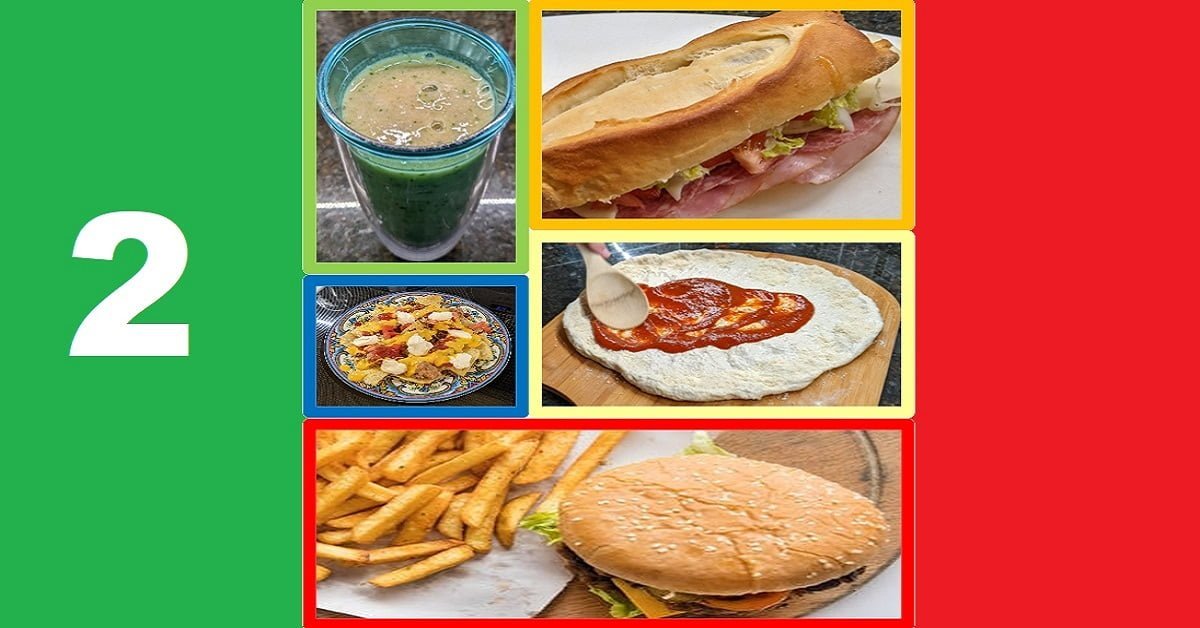In this segment of Fast Food History, we focus on fast food speed of service. It will include niches of Fast Food, production management, and some production operations. This is part of our Food Articles category. Also, see our Fast Food section that includes recipes.
Part 1 | Part 2 | Part 3 (coming)
Overview of Fast Food Speed of Service
Fast food speed of service is the life’s mission of all fast food restaurants. Speed is the internal minimum requirement of the existence of this type of business. However, the way you execute speed of service will differ among each type of food business.
So, we start to cover the differences surrounding food niches. Then, we’ll move on the production and related processes. We start of our History of Fast Food Part 2 with an overview of the niches. An example niche mentioned are hot dog concepts. Later, we also will be discussing the use of production management used in fast food operations.
Within that topic, we delve a little into management, the staging process as it compares to an assembly line, and the processes of the front and back areas of a fast food restaurant. Then, we conclude with a brief mention of historical gender work roles.
Fast Food Speed of Service Leads to Fast Food Niches
In time the desire to excel in fast food speed of service leads to new fast food niches. While the Foods Industry itself has its own Niches, Fast Food does too. And some are not fully a niche but more of a specialty or signature element. Here are some over the decades.
- Frozen Mugs (like for serving root beer)
- Square burger patties
- little buns, sliders
- ketchup flavors (yes, there was a chain that focused on that)
- southern cooking
- hot dog specialties
- Mexican or Tex-Mex fast food
- custom changes to your fast food orders (the biggest chain that started that was Burger King)
- coffee shops, sports bars, etc. for socializing
So, here’s an in-depth example of one of these niches, the hot dog.
Fast Food Speed of Service Sees the Hot Dog Niche
The Hot Dog Concept
The marketing of the hot dog was like any other fast food speed of service goal. It was going to try to build a niche that could grow. So, promoting the hot dog as cheaper and healthier than the burger became the idea. So, to combat this, burger places began adding hot dogs to their menus. But, the hot dog places had different kinds of hot dogs. They had quarter pounder dogs, foot-longs, sausage dogs. Changing the toppings created new menu items. Examples were different items like chili dogs, cheese dogs, and even slaw dogs and kraut dogs.
The one thing that most hot dog restaurants could not do however, was to successfully add a good burger to their menu. The main type of fast food restaurants that were able to pull it off and last, was the drive-in type of chains. Examples from the past were Dog n’ Suds and A&W. Today’s modern success story of having a good burger and good type of different hot dog menu items is the Sonic Drive-in Restaurant chain.
Experience with Hot Dog Chain Restaurants
When fast food speed of service expanded from the 1950s through the 1970s, some hot dog chain restaurants sprung up. However, there weren’t as many as burger joints. During the 1970s, as an assistant manager, I worked in a startup hot dog chain in Florida “Top Dog Restaurant”. I later worked in management in another hot dog chain, “Dog n Suds“, in Paragould, Arkansas.
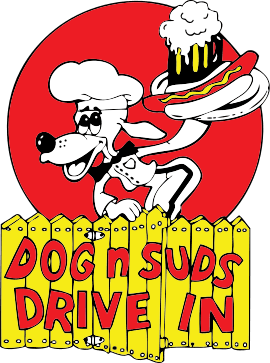
I concluded with a hamburger and hot dog themed fast food startup called “Frosties”. And I learned some things from people who worked in “Wienerschnitzel” and “Wiener King” chain restaurants.
So, in my final stint in fast food management, I was able to reduce the opening labor volume of a new startup by 30.1%. That’s because I analyzed the equipment layout and thought through the sales and production processes. The originally planned staffing of 75 people became 52. It was possible because the equipment choices had excellent productivity features in their design. And, coupled with their placement in the layout, I understood how to optimize fast food speed of service.
Optimizing Work Schedules
So, I created a list of minimal production tasks for high-volume times and slow times. Then, I listed the rest of the working tasks separately. The scheduling was studied with estimated absolute minimum production load requirements. Then, I reviewed the remaining tasks spread across the entire schedule, slow and busy times. That way, if someone called in sick, some extraneous work could be delayed. However, there was still enough staff to handle the production required tasking.
So, ultimately, I had the list of all the duties of the entire operation. On it, any shift could perform some tasks, even with no customers. Regardless, the result still required usage of split shifts, which were great for part-time workers. In other words, I employed queuing management techniques to reduce labor costs and improve fast food speed of service.
So, lets look at some of those productivity concepts from that era, with a few comparisons of today.
Fast Food Industry Applies Production Management
Productivity Elements of Time and Quality
An old conservative very simply once said this about getting something done. The story goes like this. A manager pressured an employee asking when they were going get something done. The sarcastic employee’s reply might have been: “You can have it fast or you can have it right; which do you want?” And, in fact, managers too used similar responses to their bosses.
Eventually, more professional statements did eventually start to occur. For example, “I made some discoveries that wouldn’t provide a quality outcome that you desire. So, it’s going to possibly be another 2 hours.” But, that’s in general management. And that type of verbiage wouldn’t be that professional in fast food. So, these managerial improvements had to occur on the base level of construction and engineering first.
But this is not about bad attitudes; it’s about how fast food management dealt with defining and improving on those 2 key items of concern that strongly impacted business profits and survival. Do you want it Fast (Time) or do you want it Correct (Quality).
In actuality, you have a degree of time duration allowed, along with a degree of quality acceptance to attain when producing something, such as even a meal. What better way to discover how to produce meals with maximum profits and minimal losses than to study manufacturing productivity. High volume factories were leaders in continuously applying all kinds of ways of improving speed and balancing that with determined levels of accepted quality.
The Summarized History of Modern American Management
In the early years of fast food speed of service in the 1950s, it was also a birthing time for Modern American Management. A lot of managerial principles were studied and applied in the manufacturing industry. Industrial Management was key to American progress in the 1950s through the 1980s. Manufacturing was the fastest growing industry since the end of World War II. Hence, that period of time became “The Industrial Revolution”.
In those early years, our country exchanged a ton of ideas from Japan, in the area of improving productivity through newer principles of management.

They were a world export leader at that time, similar to how China is today. The Japanese were known for outstanding management results in factories. They weren’t very good for dealing with people qualitatively but they were good with productivity.
Eventually, by the 1970s, the gears changed and Japan began taking heavy lessons from American Management applied principles. A few historically reputable organizations exist today that have led a significant role of that advancement, specifically such as the American Management Association.
Basic management principles evolved into applying ratios of such key factors as “time” and “quality”. In other words:
What is the fastest, cheapest way I can make something, give it to a customer, and have it where they’ll return again as a repeat customer?
This is where the food services industry welcomed the high-volume assembly line. This transfer of learning led to also improve fast food speed of service internally at the final consumer level.
Fast Food Assembly Line Productivity
Fast productivity has an fixed starting point of equipment placement and production layout design. The build-out phase of construction for a new fast food restaurant was updating as experience grew. A lot was learned from factories regarding how they efficiently produced products repeatedly. The placement of equipment was extremely important for time-and-motion efficiency for saving time and steps. These concepts mimicked production lines from factories. The correctly placed equipment in lines and spatial positioning was based on the food preparation frequencies. This involved both the back end and the front end.
The Back End Design and Process
In the back, there commonly would be two sides with a large preparation area in the center, which is still a popular model today. The idea is that one side could shut down during slow times. And as experience grew, this further expanded into having smaller pieces of equipment so that during an extremely slow time, even parts of a side could be shut down. So, each individual side might have multiple fry stations and multiple grills.
During extremely busy times, one person on each side would manage their own fry stations, another ran the grills, and 2 others on each side would handle food prep, i.e., making the sandwiches. In total, just for that aspect, there would be 4 people per side, with a total of 8 persons cranking out the food into the labeled food chutes under the warming lamps.

In the back, all equipment related to cooking and heating was along both of the back, longer walls. In the center, there might be a large double-sided food preparation center. That had refrigerated units of stainless steel pans containing toppings and condiments.
Microwaves Introduced for Fast Food Back End Production
Microwaves were usually on a longer top shelf on both sides of that long prep area. The microwaves quickly thawed out something or heated up something to make it a bit hotter.
As an example, if a fast food operation hardly ever sold a steak sandwich, they might be kept frozen. When an order comes in for one, the microwave could be used to thaw it out, followed by then turning around to put it on the grill. When it was cooked, the employee would then take it off the grill, turn around to face the same food prep counter, complete the making of the sandwich, and then drop it into the food chute for access by the front counter crew to pull the order together.
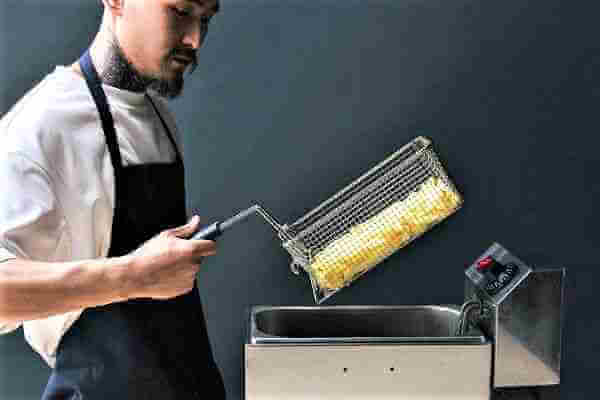
Fast Food Storage for Back End Production
Also, in the back, there would often be the walk-in freezer and refrigeration rooms. This is where the product would be stored for 2-14 days of work and it was easily available for the back end crew. If it was a high-volume operation, there would be more temperature-controlled storage outside in a locked small shed-sized building.
And, usually in the extreme back side would be a tiny office. Rolling racks of sandwich buns are in various places. Also, there would be strategically placed stainless steel wire shelving units for dry goods and non-refrigerated foods storage.
The Front End Design and Process
The front end crew took care of the front counter, the drive-thru window, and today’s kiosk and app orders. The front crew was responsible also for preparing the drinks and certain sides. The equipment for dispensing drinks, ice makers, ice cream, and refrigerated items was usually up front.
Use of Ice Bins for Speed of Service for Front End
However, with some scenarios, the ice maker might be in the far back, and it would have to be transported manually to the front where they used the cheaper ice bins which only stored ice for dispensing. This did not save steps, however, it did reduce equipment cost and electricity utility costs.
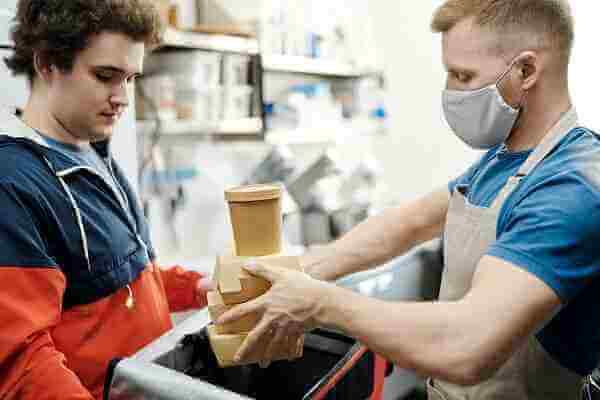
Order Fulfillment Process on Front End
In the front, that crew would deal with the initial taking of an order from the customer, process the money transaction, and then turn around and yell to the back end what was needed for them to make. Then, the back end person would repeat back what they heard, as a means of quality control for service. Then, both the back end and the front end would begin to fulfill that order. So, since the front would be the final side of finishing an order, the short-term storage for packaging items, like bags, cups, lids, condiment packets, and straws were often up front, with the bulk stock being stored in the back.
Communications Improvements for Front End Processing
Eventually, microphones were added, as the industry learned two things. First, the customers thought this was outlandish and didn’t like it. Second, it helped in improving order fulfillment accuracies as the audio was clearer. Ultimately, of course, computers replaced the yelling, and monitors of orders were placed for the front and back end people to use for managing pending and fulfilled orders.
The Handoff Between the Back End and Front End for Speed of Service
While the back was making the hot items, the front would make the cold items such as the drinks. Most of the time, if the food wasn’t made ahead of time (which is often the case even today), the front tends to wait for the sandwiches and fries to be produced. While waiting, this is when the front end person might be knowingly tasked to refill items from back storage to the front storage like cups or napkins. Or, to make more coffee, for example.
When ready from the back, the front end crew person would pull the produced items from the food chutes such as the sandwiches and fries. The front end person would then hand the completed order to that person. Normally, the front end is balancing several orders in a row.
Usually the front end crew would be responsible for changing out the soft drink tanks and sometimes they might ask for help with those from a back end person.
Gender-based Work Positions
Not until around the mid-1980s, did the Draconian practice of gender roles begin to make a change. Before that time, you would typically see only males in the back end (cooks) and females at the front end (cashiers). Both sides worked together to fulfill orders as quickly as possible. Each side could observe what the other was doing to some extent.
Some of these changes resulted initially due to positive impact of individual managers. The understanding of values behind cultural, racial, and gender differences improved over time.
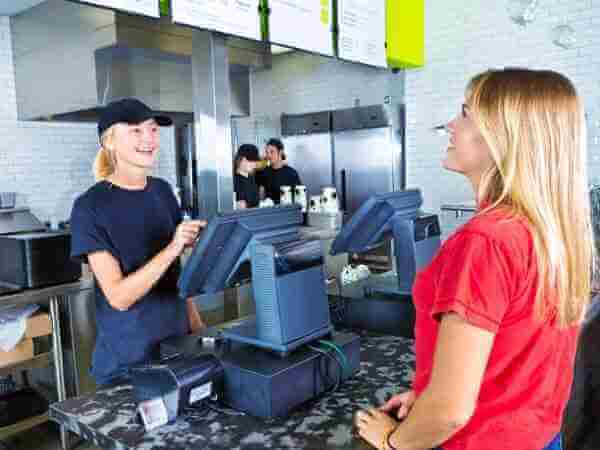
True Example of a Gender role change event in Fast Food
I recall in the 1970s we followed the same practice when I was managing a fast food pilot restaurant for my brother and Frostie Enterprises (the root beer company). The theme was hamburgers, dogs, and root beer in a frosted mug.
One day the weather was cold and rainy and business was very slow. We had already sent some people home due to slow activity. The female cashiers in the front and the guys cooking in the back approached me about swapping their roles for the day. They knew I was always open for suggestions for change for improvements. Their interest was more towards changing things up and gaining new experiences.
My take was more on the managerial idea of this would be a good chance for cross-training and low impact on service. It would also be good for future times if someone calls in sick, the odds would improved of having someone to fill that skillset. Also, as a manager, I was aware they wanted to try it out for some excitement of learning something different, and this was another way to improved employee morale. So, we went for it.
The Gender Role Reversal Training Event
It worked out perfectly and the staff thoroughly enjoyed helping each other in their training of new skills. They jokingly harassed each other demanding for faster production and service, while learning their new skills. At the end of the shifts, they thoroughly enjoyed it, and they had a much better appreciation also of each others’ jobs.
The Public’s Reaction to the Gender Role Reversal in Conservative Arkansas
Oh, and the customers jaws dropped open all day long when they entered the restaurant as they had never seen males at a fast food cash register before and females cooking in the back. The customers thought that was most amazing. Who knows, maybe that’s where the idea in the 80s came from. Well, maybe not, but who knows what seeds were planted for our future growth as a civilization.
Fast Food Speed of Service Involving The Consumer
So, in the 2020s, with speed of service being optimized to a perceived maximum level, it was time to add the consumer into the helping. This was done cleverly to give the perception that getting your fast food order was quicker. Also, the consumer could think that there would be less mistakes communicating the order. This was done by encouraging the consumer to order online or to use an app. While the older generations didn’t subscribe to this concept initially, the younger ones did as they’re online far more frequently already.
The second solution involving the consumer to take the burden of fast food speed of service was to encourage the use of kiosks to place your own order. Regular restaurants had already been using table kiosks for this so, fast food was gradually adding full size kiosks for this same task. Initially, they’re a little buggy but over time, they became better.
Conclusion of Fast Food Speed of Service
We covered a glimpse into the historical evolution of how management of factories spilled over into fast food speed of service. You looked at a list of fast food niches and reviewed a bit of a hot dog niche. We then finalized with an example of gender roles in the 1970s. I hope you enjoyed this segment and look forward to the next one. In the meantime, visit “Eat This, Not That” for interesting food related nutrition and health. Regarding the history of the fast food industry, here’s an article from them “100 Shocking Facts About Fast Food You Never Knew“.

